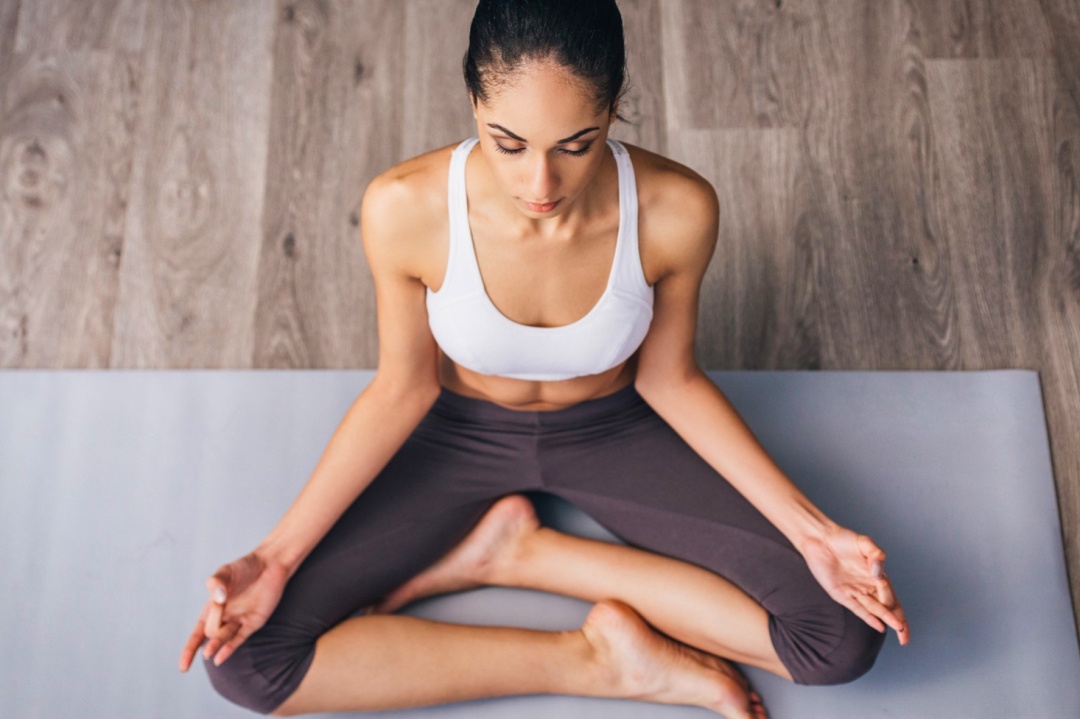
The conscious use of the breath is a key component in yoga. While there are many different breathing techniques, the main yogic breath to use throughout your practice is the diaphragmatic breath, also known as belly breathing or abdominal breathing. This is a type of breathing that involves using your diaphragm instead of your chest to breathe. It requires less effort and energy while reducing stress and anxiety and improving overall health and wellness. Unless instructed by your yoga teacher, you should use diaphragmatic breathing throughout your entire yoga session.
What is the Diaphragm?
The diaphragm is the primary muscle that controls breathing. It’s a large dome-shaped muscle located between lungs and your belly, just below the ribcage. it moves up and down when you breathe, allowing air to pass through into your lungs. The intercostal muscles between ribs are considered separate accessory breathing muscles. These are activated during chest breathing and require more effort and energy than using the diaphragm.
What is diaphragmatic breathing?
In diaphragmatic breathing, you consciously breathe only with the diaphragm—the intercostal muscles remain relaxed. Thus, the belly rises and falls with the inhalation and exhalation while the rib cage has little or no movement.
Benefits of belly breathing
Breathing exercises have been used since ancient times to improve health and well-being. There are seven major benefits associated with belly breathing that help strengthen and support a yoga practice. When you breathe through your belly, you’re not only reducing stress and anxiety from getting in the way of your practice, you are also creating a stronger connection between the mind, body and breath. Learning and using this breath in your practice will ultimately help you reach your full potential.
- Reduces stress and keeps you calm
Yoga breathing helps us release stress by activating the relaxation response, reducing cortisol levels, and increasing blood circulation throughout our bodies. This increases oxygen levels in our bloodstream, which allows our brains to function better and stimulates endorphins, which make us feel happy and relaxed. - Increases energy levels
When you breathe through your belly, you slow your breathing rate and heart rate and increasing the efficiency of your heart and lungs. You also are not spending energy by activating your chest muscles. This frees up more energy for other activities and reduces feelings of fatigue. - Boosts immunity
Belly breathing has been shown to increase immune response. A 2018 study showed practicing deep breaths increased the production of lymphocytes, one of the most important cells for a healthy immune system. - Relieves pain
Deep breathing helps improve blood and oxygen circulation and encourages muscles to relax. This reduces muscle spasms and tightness, resulting in less pain. - Lowers blood pressure
A recent study showed significant clinical improvement that contemplative belly breathing can lower blood pressure. Notably, this reduction occurred with only only 9 minutes of practice a day. - Strengthens the lungs and diaphragm
Deep breathing causes the diaphragm to contract, which strengthens both the diaphragm and the lungs. Actively engaging the diaphragm improves lung capacity, volume and efficiency. - Improves core muscle stability and posture
Activating the diaphragm by breathing into the belly also strengthens the core muscles of the body. The deep and side-core abdominal muscles are activated to stabilize your pelvis, spine and posture. Also, when practicing belly breathing, you’ll notice how much more comfortable the exercise is when you have a tall and straight spine.

Diaphragmatic breathing technique
Here are the five steps involved in diaphragmatic breathing. You can practice this pranayama for 5-10 minutes 1-2 times per day.
- Sit in a stable and comfortable position with your spine straight and long. If seated on the floor, you can use a cushion or folded blanket under the back of the hips for support. If seated on a chair, make sure both feet are flat on the floor.
- Close your eyes or soften your gaze and take several deep breaths through your nose. Allow your body to relax and bring your awareness to your breath. Make sure there is no tension in the shoulders, neck or face.
- Put a hand on your upper chest and a hand on your stomach. Inhale slowly through your nose until you feel your stomach rise slightly against your hand. Exhale slowly and feel your stomach fall away from your hand towards your spine.
- Work towards having your breaths be slow and deep with only the stomach is moving. Try to keep the chest as still as possible. Continue with these deep breaths for several minutes.
- Once you have learned the technique, work on applying belly breathing during yoga classes while holding poses, especially the challenging ones. You can also explore other yoga breathing exercises to support your practice.
Breathing practice tips
- Breathing exercises should always be done in moderation, and without strain. If you feel tired or dizzy, stop and rest.
- When practicing any type of breathwork, it’s best to start out small and gradually increase time spent practicing each week.
- It’s recommended that you do not force yourself to breathe deeply if you’re feeling anxious or stressed. Instead, focus on relaxing your mind and body before beginning your session.
- Deep breathing techniques will help reduce stress levels and anxiety, but they won’t replace therapy or medication.
- Diaphragmatic breathing is particularly effective to calm your mind and body when used with meditation.
- If you have a medical condition, it is best to consult your doctor before starting any type of yoga or breathing exercise.
[ad_2]
